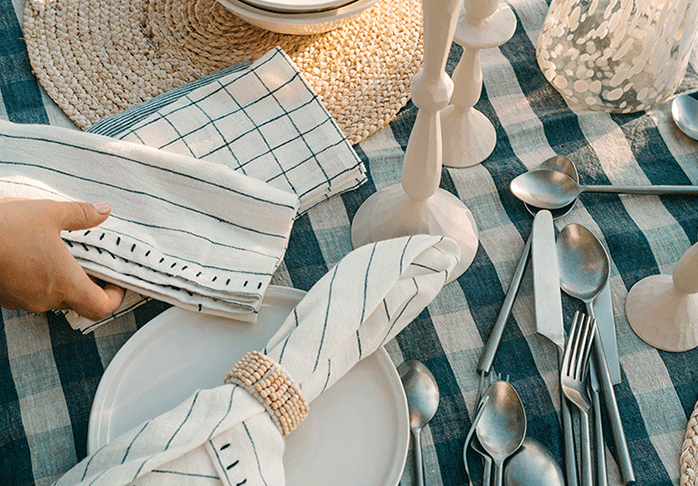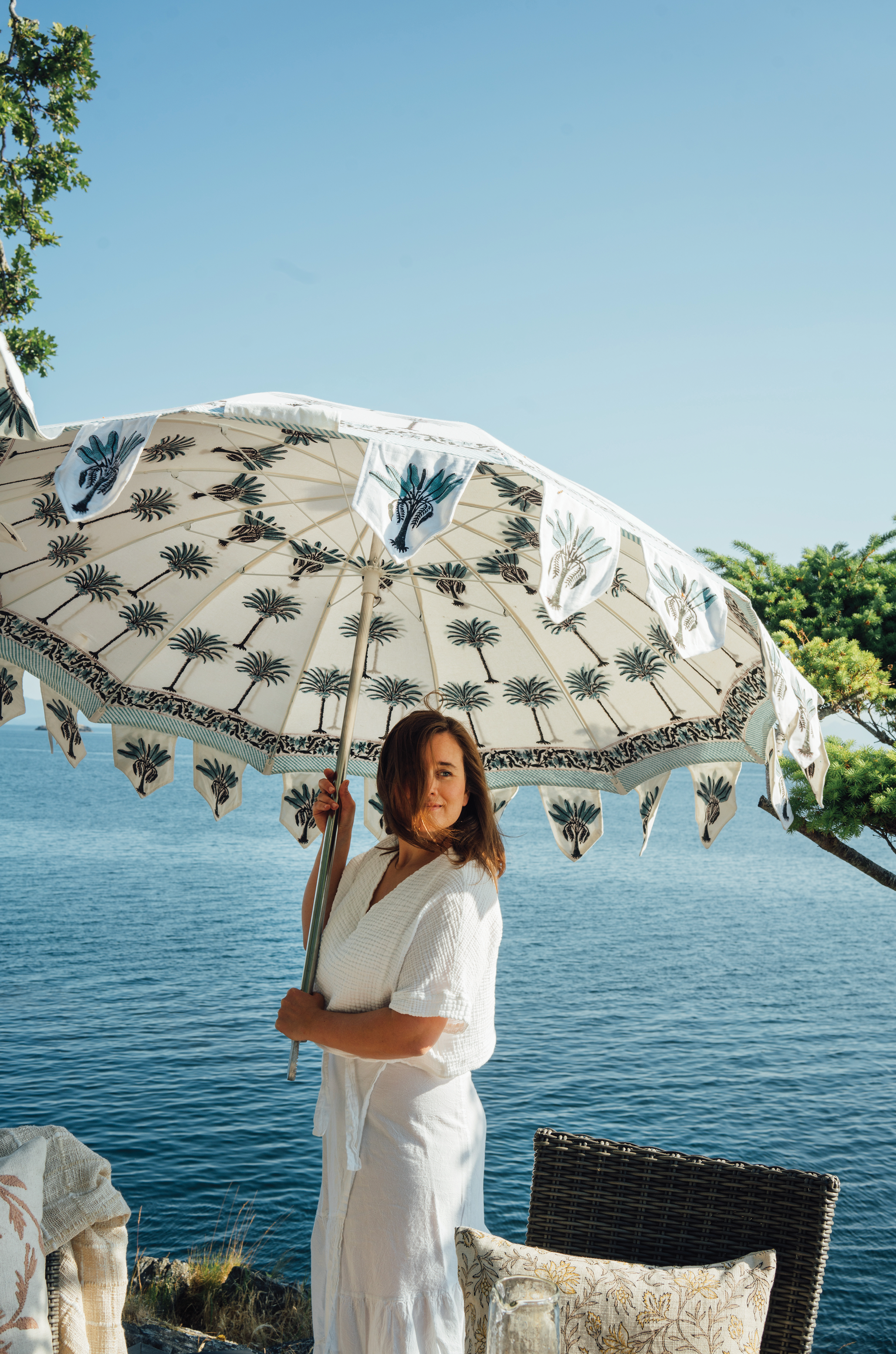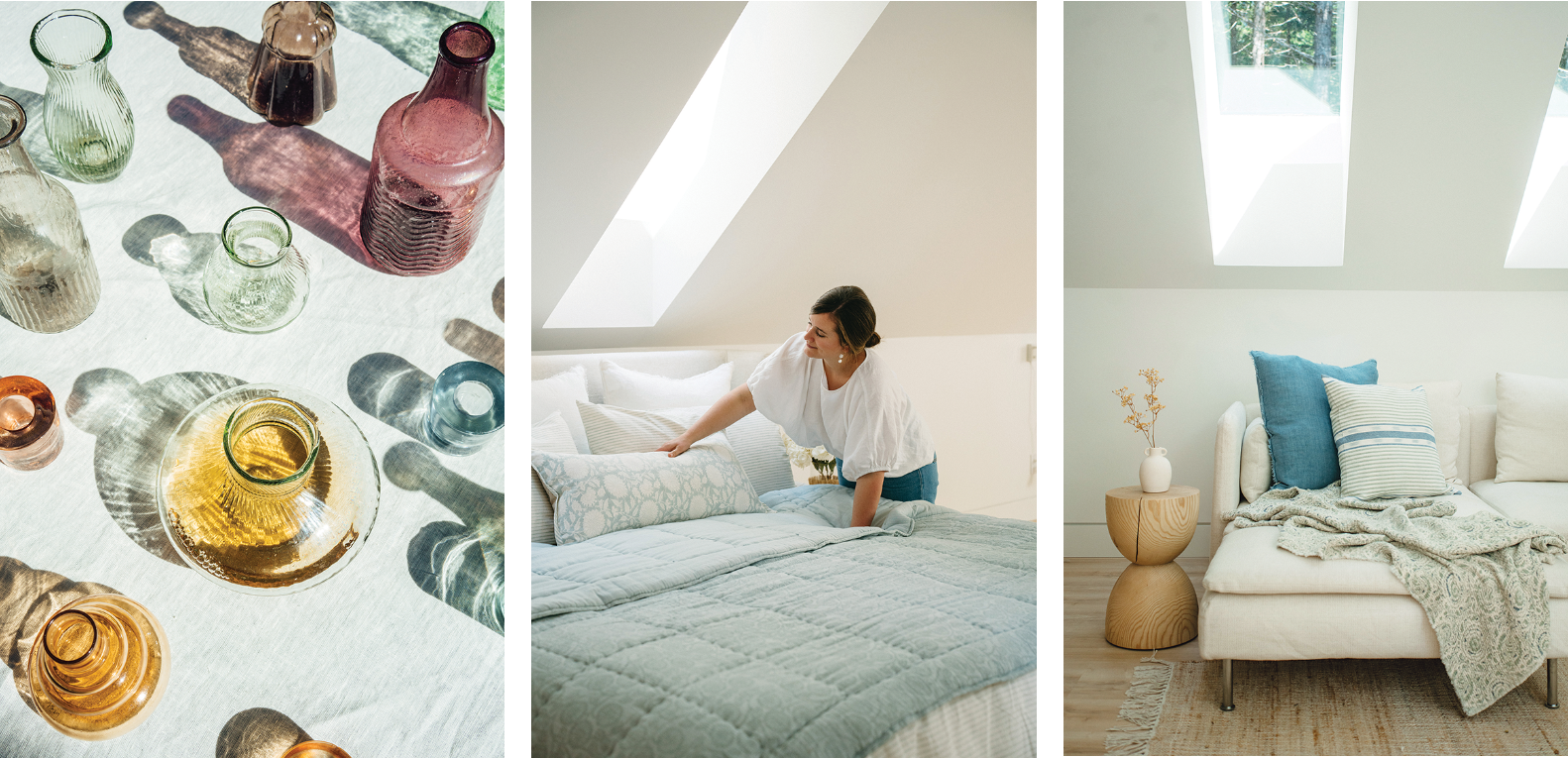
Indaba introduces subtle, upscale home décor inspired by the shore
As seen in Waterfront Living 2023.
Indaba is reimagining the way consumers adorn their coastal homes.
Indaba was founded in 1990 by Irene Held, a South African immigrant who wanted to share her love of handicrafts and eclectic design with North Americans, according to the company. Today, Held works alongside her daughter, Alison Gillespie, to bring that passion to the home décor space.

Indaba offers a variety of waterfront-inspired items. In Gillespie’s eyes, consumers and retailers are trending away from an overtly “kitschy” look and are in search of products that elicit coastal ambience through materials, colors and textiles — a more subtle approach to traditional waterfront décor.
“To us, coastal home décor done right isn’t trendy, but rather timeless,” Gillespie said. “It’s all about creating a fresh, airy space that imparts a laid-back vacation feeling. We achieve this by decorating with lots of linen, natural materials like whitewashed wood and woven basketry, and a neutral sand- and sea- inspired color palette.”
To achieve this look, Indaba employs handcrafted techniques such as block printing in pillows, throws and table linens. Additionally, Indaba offers chunky- knit cotton throws, hand-blown glass hurricanes and bud vases inspired by sea glass. Meanwhile, woven basket trays, jute rugs and duvets in coastal floral prints add an air of sophistication to waterfront homes.
“When you incorporate beautiful natural materials and handmade processes, all in a light, soft-toned aesthetic, that by-the- beach feeling comes quite naturally,” Gillespie explained.

Indaba’s products feature traditional elements with a relaxed, inviting living feel, Gillespie said. She finds herself inspired by the in-fashion “quiet luxury” aesthetic.
“It is authentic yet understated and encourages investing in high-quality pieces, rather than fleeting trends,” she said.
The Seaview Ikat pillow collection is inspired by the ocean and aims to capture the essence of coastal décor.
“We love our new Seaview Ikat collection — made through the special ikat process of resist dyeing where threads are bound and dyed before being woven into fabric; the resulting pattern has a sense of movement and fluidity, reminiscent of the ocean,” Gillespie said.
Additionally, the Lina Linen collection features stonewashed, frayed-edge linen pillows in classic sea-inspired hues such as ivory, chambray, azure blue, celeste green, cobalt and more, making the line a bestseller for Indaba.
“They are the most versatile pillows on beds and sofas,” Gillespie elaborated. “With these as our backdrop, we style beautiful pillowscapes with our collection of coastal accent pillows.”
OUTDOOR LIVING
 One beautiful aspect of coastal homes is the ability to create a living space outside that further promotes tranquility and inspiration.
One beautiful aspect of coastal homes is the ability to create a living space outside that further promotes tranquility and inspiration.
Many of Indaba’s products are transitional between the indoors and outdoors. Its wooden platters can double as décor and serveware, depending on the occasion. Additionally, Indaba offers tableware such as mouth-blown Indian glassware, glazed scalloped dishes and kitchen linens with details such as eyelet embellishments or blanket-stitched edges — ideal for donning a patio dining table.
Handcrafted pots allow consumers to plant in the home or outside. The Felt Ombre Pots are created by women makers in Nepal, while the Indaba Character Pots are made of ceramic and feature a carved face and ears.
ENVIRONMENTALLY CONSCIOUS
Those with an affinity for coastal living often have a deep appreciation for nature and ocean or lake preservation. As such, sustainably made products are increasingly top of mind for beachgoers.
The best part? Eco-friendly materials are, by nature, emblematic of the beach — adding to the desired beachy feeling in one’s home, rather than taking away from it.
“As consumers increasingly value sustainably and ethically made products, we’ll see more coastal interiors inspired by natural materials — linen, jute, seagrass, sustainable wood,” Gillespie said. “There is something innately beachy about these materials, and they really bring the coastal feeling home.”

Coastal living by the numbers
40% live on the coast
Coastal counties of the U.S. are home to more than 128 million people, or almost 40% of the nation’s total population, yet the coast accounts for less than 10% of the nation’s land mass (excluding Alaska).
34.8 million population increase
From 1970 to 2010, the population in coastal counties increased by 34.8 million people, or approximately 40%.
Top 5 coastal populations
California tops the coastal populations chart with 26.7 million people living in coastal counties, followed by New York with 16 million, Florida with 15.8 million, New Jersey with 7.1 million and Texas with 6.8 million.
58.3 million jobs
Annually, coastal counties produce more than $9.5 trillion in goods and services, employ 58.3 million people, and pay $3.8 trillion in wages.























